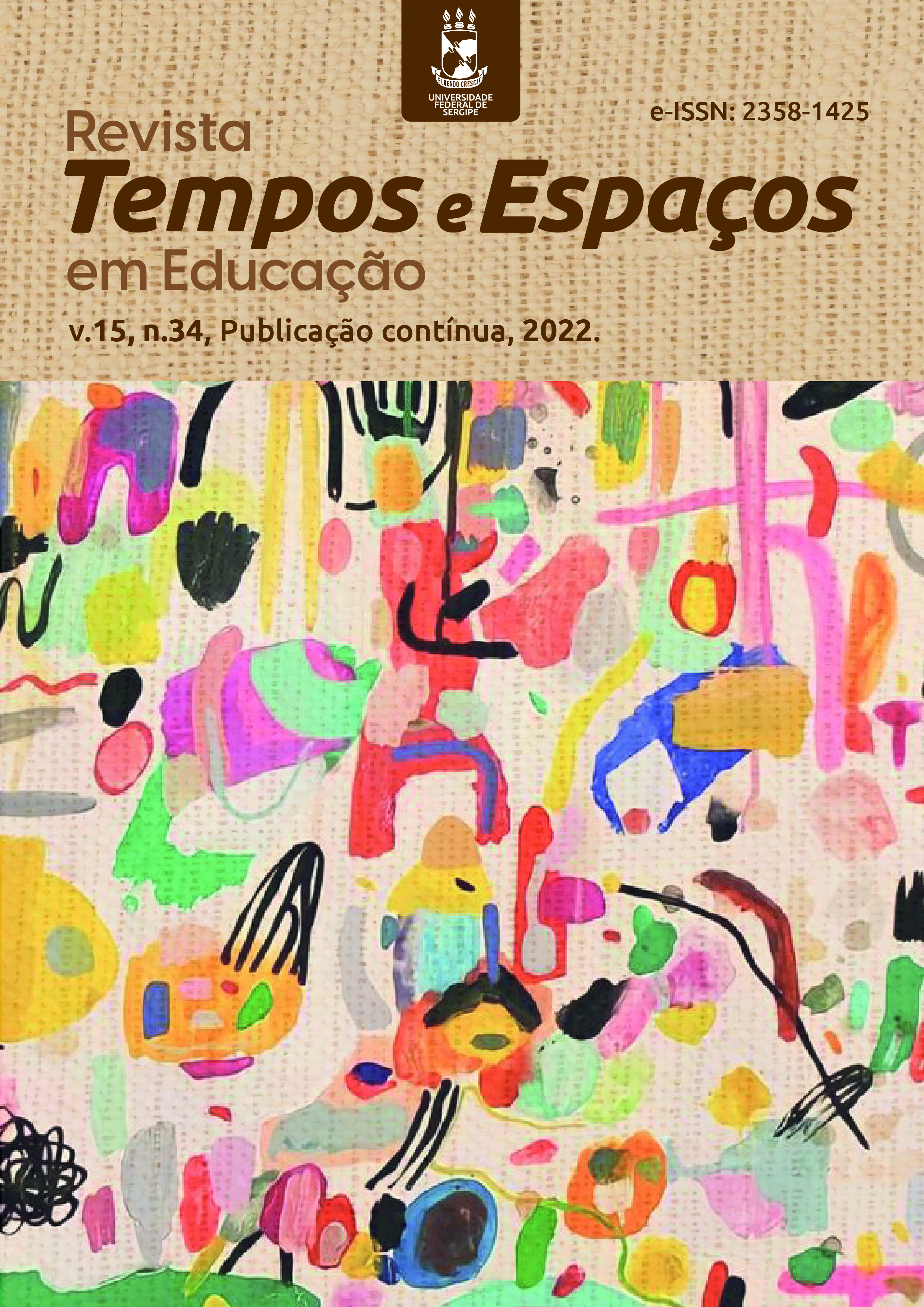Conteúdo e estrutura da competência profissional dos futuros professores de belas-artes
DOI:
https://doi.org/10.20952/revtee.v15i34.17004Palavras-chave:
Artes plásticas, Competência profissional, Componentes estruturais da competência profissional do professor, Futuro professorResumo
O artigo fornece uma análise detalhada das definições de "competência" e "competência" de um professor de belas artes e distingue as principais diferenças entre estes conceitos. Disposições teóricas generalizadas relativas ao conteúdo do conceito de "competência profissional de um professor", que é considerado como uma qualidade pessoal integral, que se manifesta na aplicação prática dos conhecimentos profissionais, na capacidade de resolver problemas de acordo com a direcção da actividade, na vontade de desempenhar as suas funções profissionais de acordo com as normas geralmente aceites da educação moderna, na aplicação e expansão da vida e experiência profissional, na interacção eficaz com colegas e estudantes. O estudo para determinar o nível de formação de competências relevantes em futuros professores de belas artes no curso de formação experimental foi levado a cabo. Foi determinada a necessidade de condições e programas especiais destinados a melhorar a competência profissional dos futuros professores de belas-artes nas instituições de ensino profissional.
Downloads
Referências
Alikulovich, B. A. (2021). Subject Training Disciplines as a Means of Forming Professional Competence in Future Teachers of Fine Arts. Annals of the Romanian Society for Cell Biology, 8965-8989.
Babaeva, S. S. (2019). Pedagogical excellence of a teacher in the educational process on the basis of a comprehensive analysis of educational technologies. International Journal of Innovative Technologies in Social Science, 5(17), 8–11. https://doi.org/10.31435/rsglobal_ijitss/31082019/6616
Berriz, B. R., Wager, A. C., & Poey, V. M. (Eds.). (2018). Art as a way of talking for emergent bilingual youth: A foundation for literacy in preK-12 schools. Routledge.
Bibik, N. M. (2008). Problems of scientific support for the modernization of general secondary education. Pedagogy and Psychology, 1, 40–46.
Cahnmann-Taylor, M., Souto-Manning, M., Wooten, J., & Dice, J. (2009). The art and science of educational inquiry: Analysis of performance-based focus groups with novice bilingual teachers. Teachers College Record, 111(11), 2535-2559.
Kalaja, P., & Pitkänen-Huhta, A. (2020). Raising awareness of multilingualism as lived – in the context of teaching English as a foreign language. Language and Intercultural Communication, 20(4), 340–355. https://doi.org/10.1080/14708477.2020.1786918
Maria, K. (2015). The Use of Project Method in Teaching Arts—An Interdisciplinary the Use of Project Method in Teaching Arts, An Interdisciplinary Approach in High School. Review of European Studies, 7(11). https://doi.org/10.5539/res.v7n11p159
Palmer, D. K., & Martínez, R. A. (2016). Developing biliteracy: What do teachers really need to know about language?. Language Arts, 93(5), 379.
Pechenizka, S. S., & Zavalna, О. M. (2019). Developing foreign language communicative competence of students by means of art pedagogy. Zhytomyr Ivan Franko state university journal. Pedagogical sciences, (4 (99)), 76-85.
Popova, A. A. (2012). Theoretical foundations of work on the development of correctness of Ukrainian speech of future teachers in a bilingual environment. Scientific notes of the National University of Ostroh Academy. Series: Philological, 31, 223-226.
Récka, A. (2020). Digital competences of future teachers of fine arts. Ad Alta: Journal of Interdisciplinary Research, 10(1),243-252.
Rush, J. C. (1997). The Arts and Education Reform: Where is the Model for Teaching “the Arts”?. Arts Education Policy Review, 98(3), 2-9.
Wager, A. C., Poey, V. M., & Berriz, B. R. (2017). Art as Voice: Creating Access for Emergent Bilingual Learners (full issue). Journal of Pedagogy, Pluralism, and Practice, 9(1), 1.
Yuldasheva, N. I. (2021). Formation of art and aesthetic competence in future fine art teachers. ACADEMICIA: An International Multidisciplinary Research Journal, 11(3), 1465-1471.
Downloads
Publicado
Como Citar
Edição
Seção
Licença
À Revista Tempos e Espaços em Educação ficam reservados os direitos autorais pertinentes a todos os artigos nela publicados. A Revista Tempos e Espaços em Educação utiliza a licença https://creativecommons.org/licenses/by/4.0/ (CC BY), que permite o compartilhamento do artigo com o reconhecimento da autoria.



